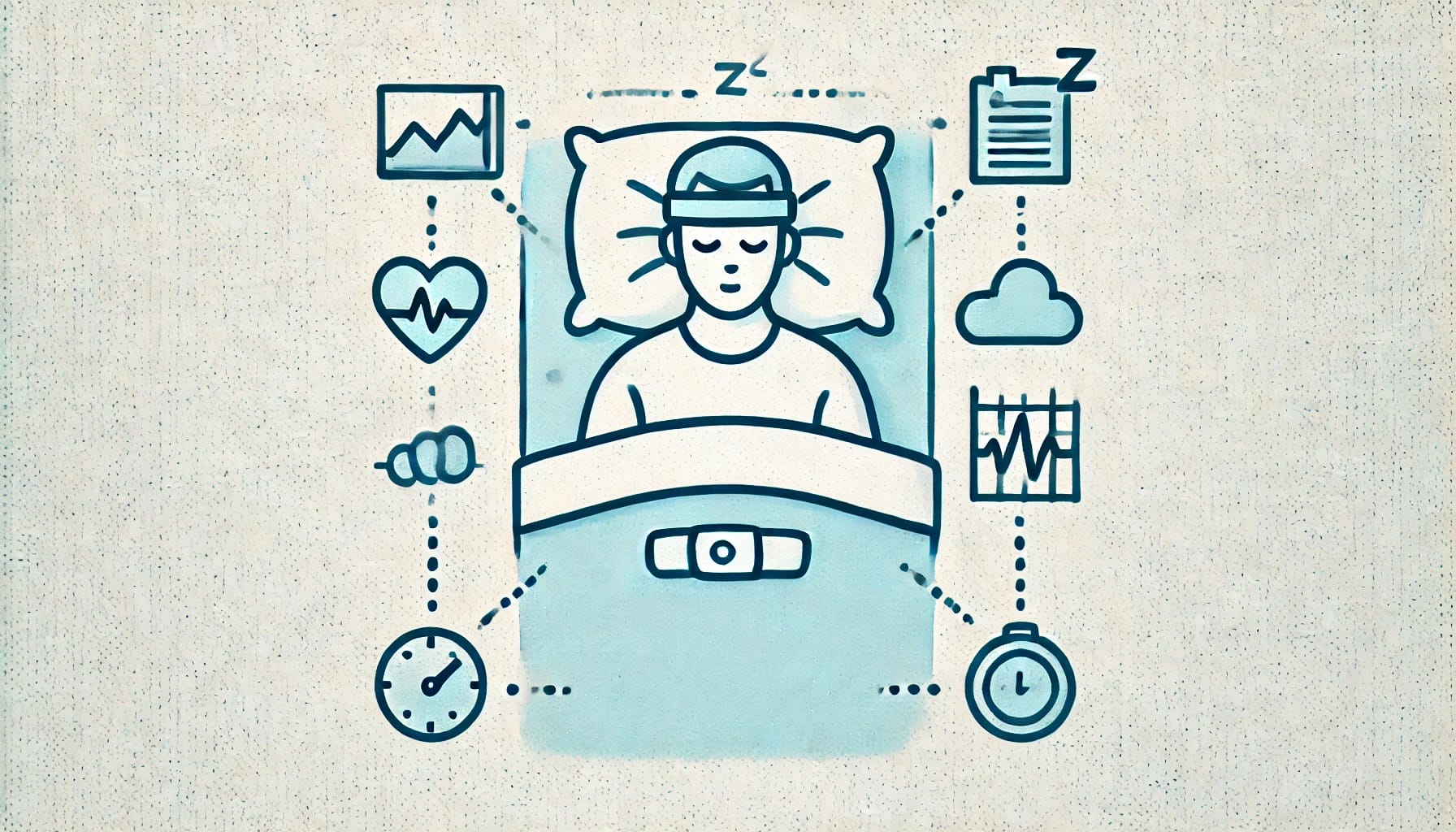Introduction
The landscape of sleep research has undergone significant transformation over the years, evolving from basic observational studies to advanced technological investigations. This progression has been crucial in enhancing our understanding of sleep patterns, disorders, and the overall impact of sleep on human health. Central to this advancement is the development of multifunctional monitoring sleep research devices, which have revolutionized the way sleep data is collected and analyzed.
“Adding advanced sensors and wireless tech to sleep research devices is a big step in understanding sleep better.”
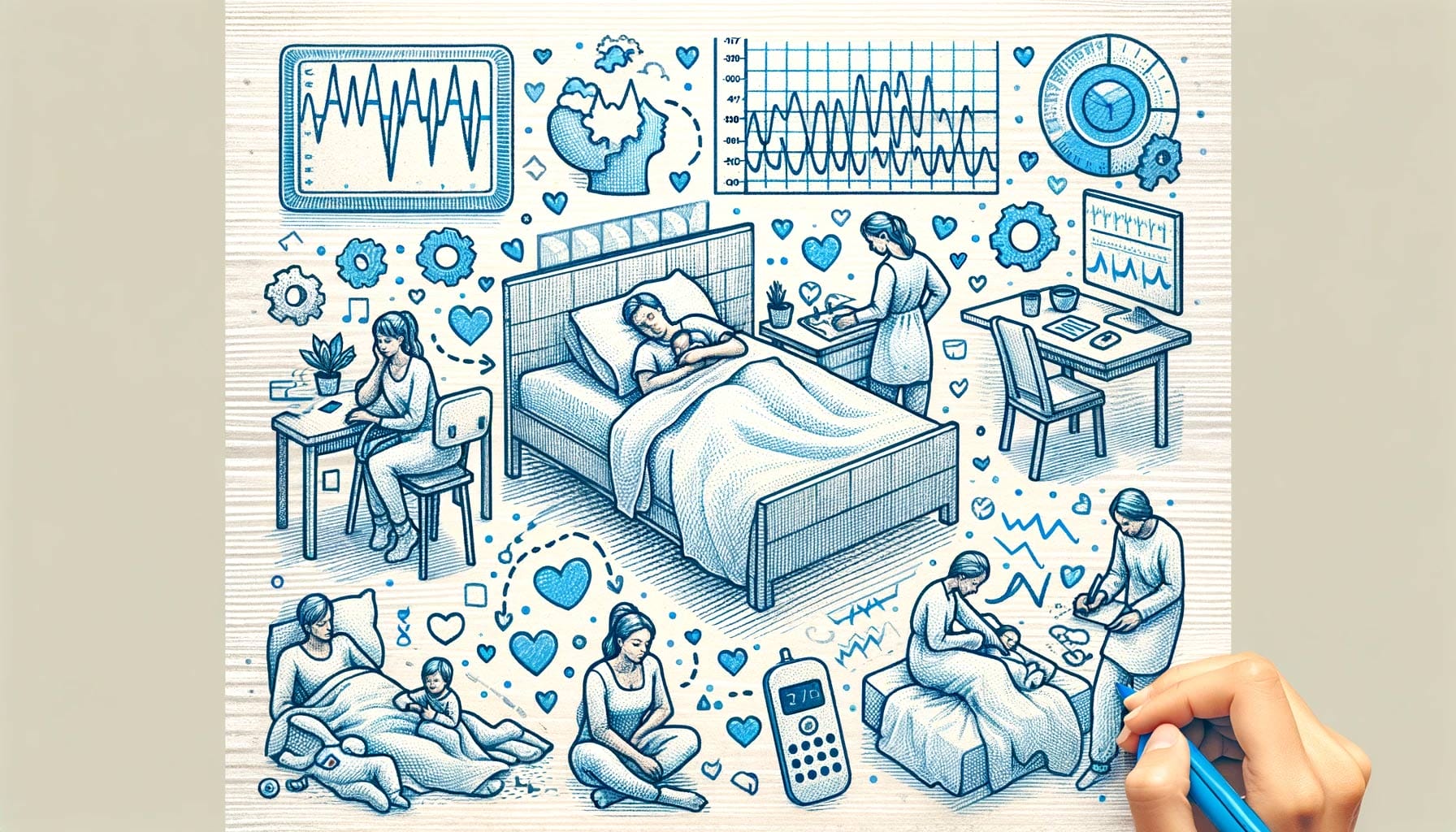
Historical Context of Sleep Monitoring Technologies
Sleep research has its roots in the early 20th century when the study of sleep was primarily observational, relying on subjective reports and visual monitoring. The advent of electroencephalography (EEG) in the 1920s introduced a new era of sleep research, enabling the objective measurement of brain waves and sleep stages for the first time.
The Evolution of Sleep Measurement Tools:
-
- Early Tools: Initial methods were rudimentary, often involving direct observation and manual recording of sleep duration patterns.
-
- EEG Integration: The incorporation of EEG technology provided a breakthrough in understanding sleep architecture, but was limited by the complexity and immobility of the equipment.
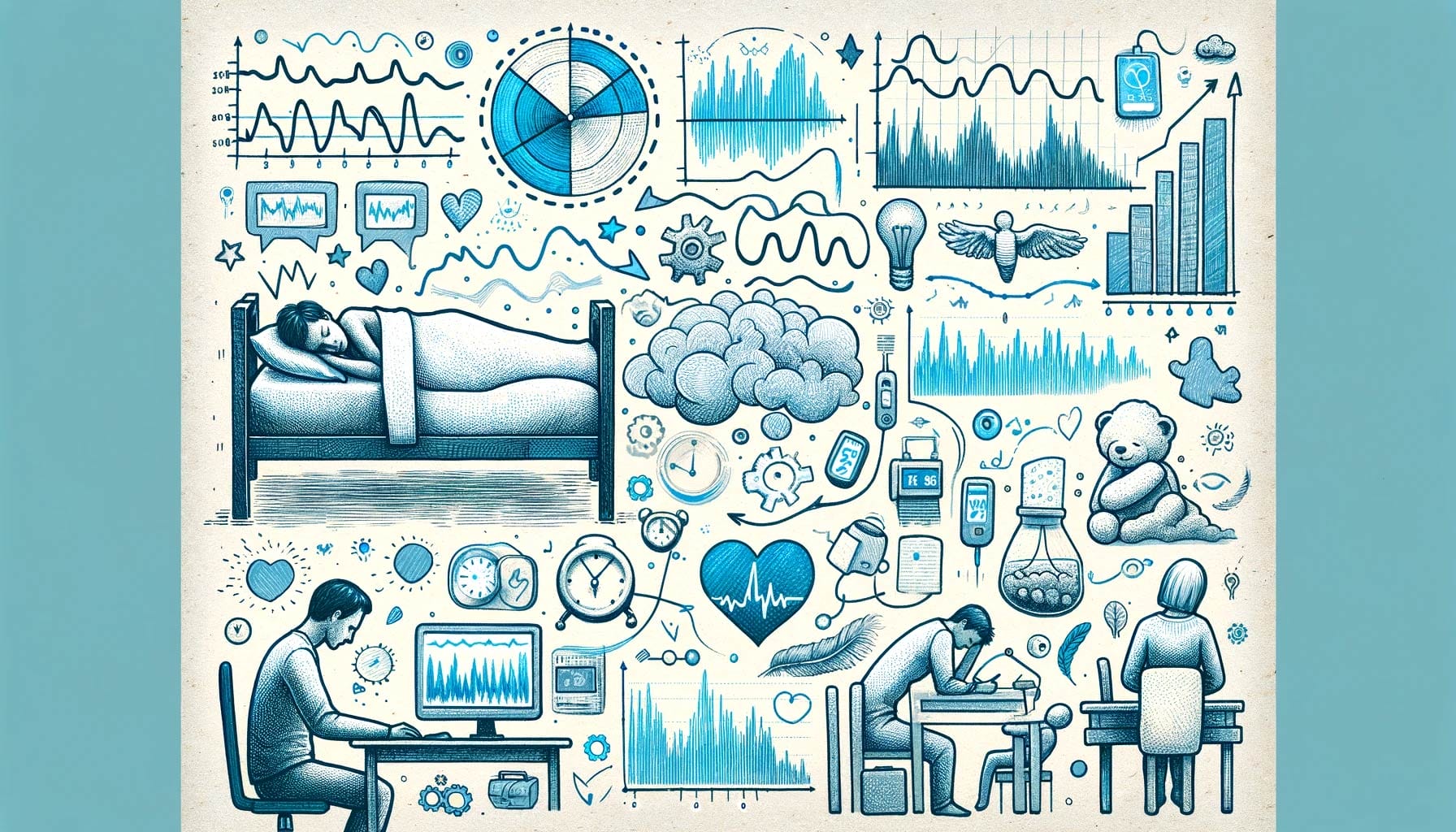
As technology advanced, so too did the tools available for sleep research. However, these advancements were often accompanied by increased complexity and a need for extensive wiring, limiting the scope of research to controlled environments.
“The transition from observing directly to using wired EEG setups paved the way for today’s wireless, versatile sleep research devices.”
Despite these limitations, the foundation set by early sleep research technologies paved the way for the development of sophisticated devices capable of monitoring multiple physiological parameters with ease and precision. The transition from bulky, wired systems to sleek, wireless devices represents a significant milestone in the field, opening new avenues for in-depth sleep studies.
The Rise of Multifunctional Sleep Tracker Research Devices
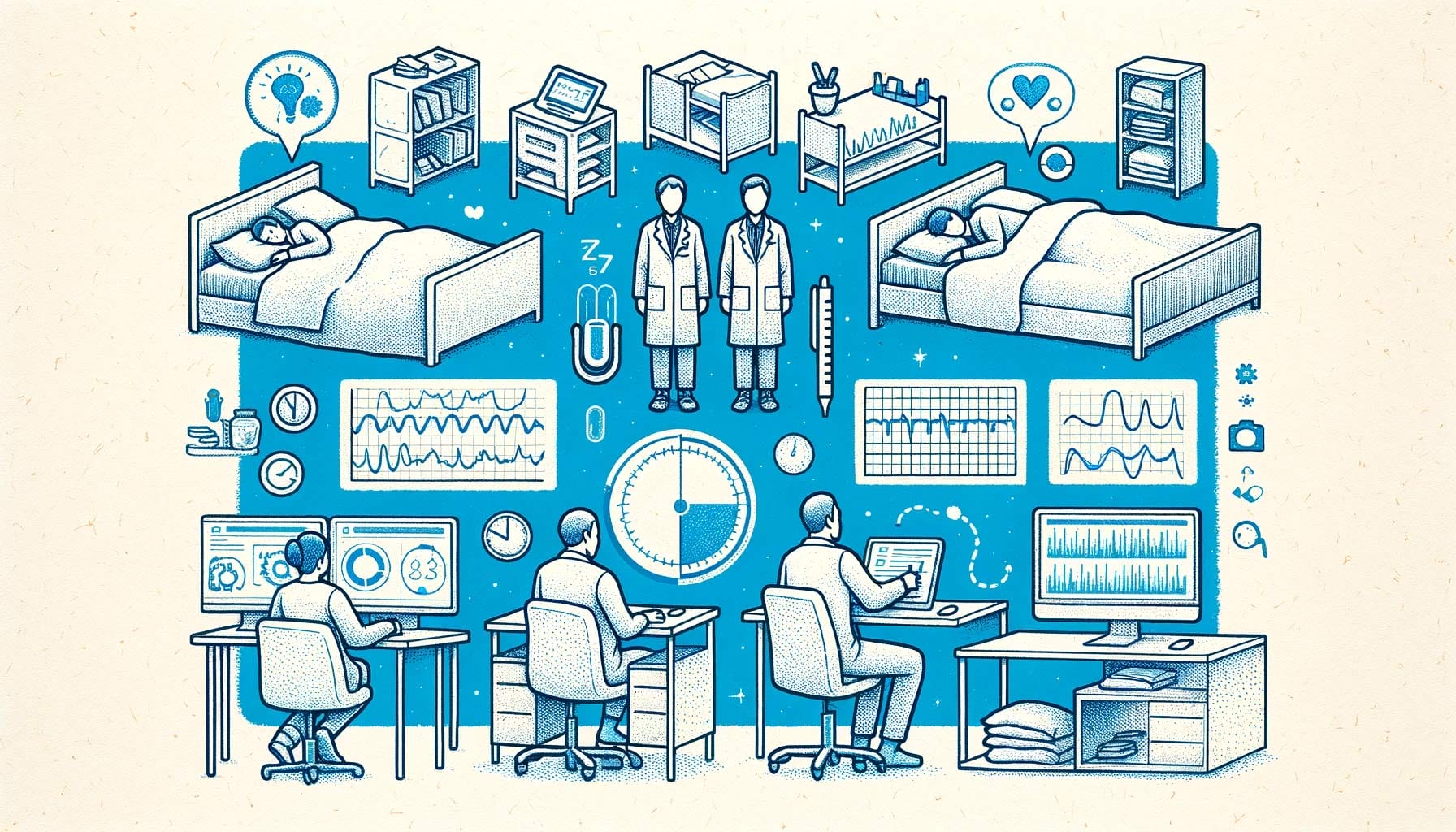
The last decade has witnessed a significant shift in sleep research technology, characterized by the emergence of multifunctional devices. These advanced tools are designed to measure a wide range of physiological signals, from brain activity and eye movements to heart rate and respiratory patterns, all while maintaining the comfort and mobility of the participant.
Key Features of Multifunctional Devices
Multifunctional sleep research devices offer several key features that distinguish them from their predecessors:
-
- Comprehensive Data Collection: Ability to monitor multiple physiological signals simultaneously.
-
- Wireless Connectivity: Facilitates real-time data transfer without the encumbrance of wires.
-
- User-Friendly Design: Ensures ease of use for researchers and participants alike.
-
- Portable and Non-intrusive: Allows for sleep studies in naturalistic settings outside of the laboratory.
The integration of these features into a single device represents a paradigm shift in sleep research methodologies. It enables researchers to conduct more nuanced studies at natural home environments with greater ease, significantly expanding the potential for discoveries in the field.
Introducing Fibion Vitals: Modern Wireless Sleep Research Technology
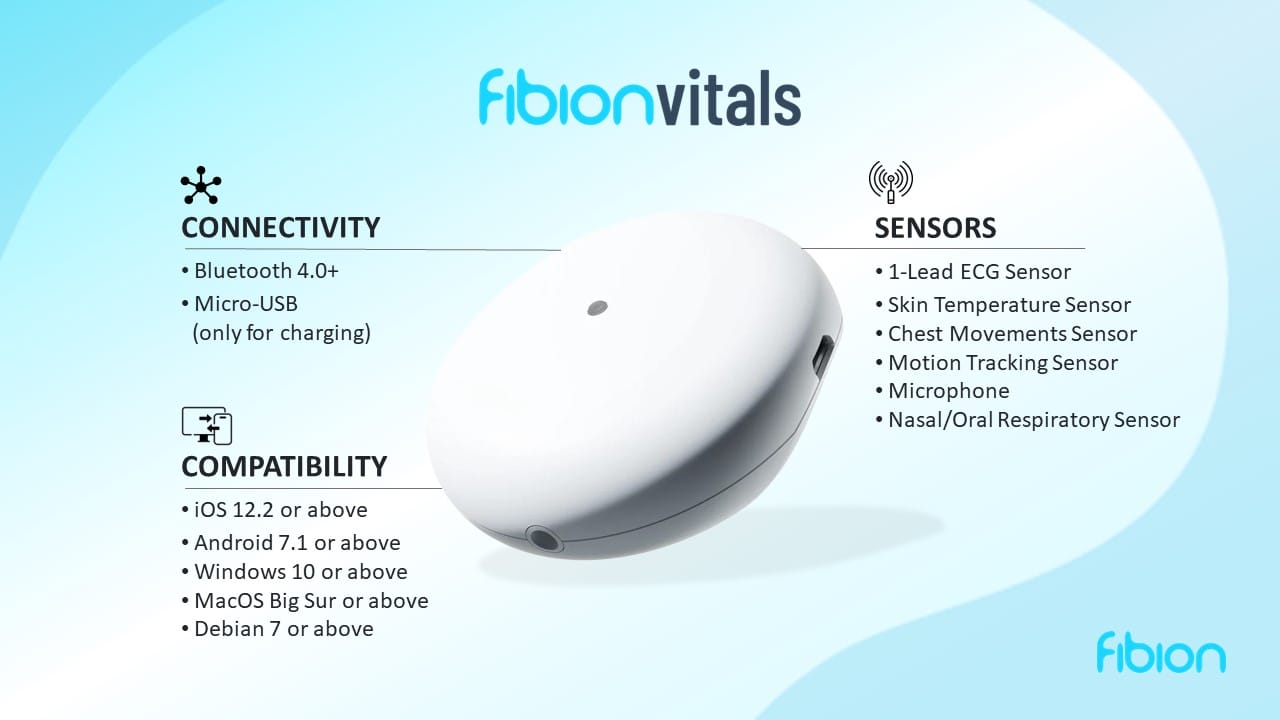
Engineered with precision and the needs of sleep researchers in mind, Fibion Vitals incorporates a suite of sensors and features designed to capture a comprehensive profile of sleep health in one compact, wearable device.
Capabilities of Fibion Vitals
Fibion Vitals stands out for its multifaceted approach to sleep monitoring, offering:
-
- Nine-Axis Motion Sensor: For accurate monitoring of physical movement and sleeping positions.
-
- Impedance Measurement: To assess respiration patterns with minimal intrusion.
-
- Temperature Sensor: Providing insights into the sleep environment’s impact on sleep quality.
-
- Heart Rate and Variability: Essential metrics for understanding autonomic nervous system activity during sleep.
-
- Single Lead ECG: Offers a simplified yet effective method for cardiac monitoring.
-
- Nasal Airflow Measurement: Via a nasal cannula, adding a critical dimension to the assessment of sleep-disordered breathing.
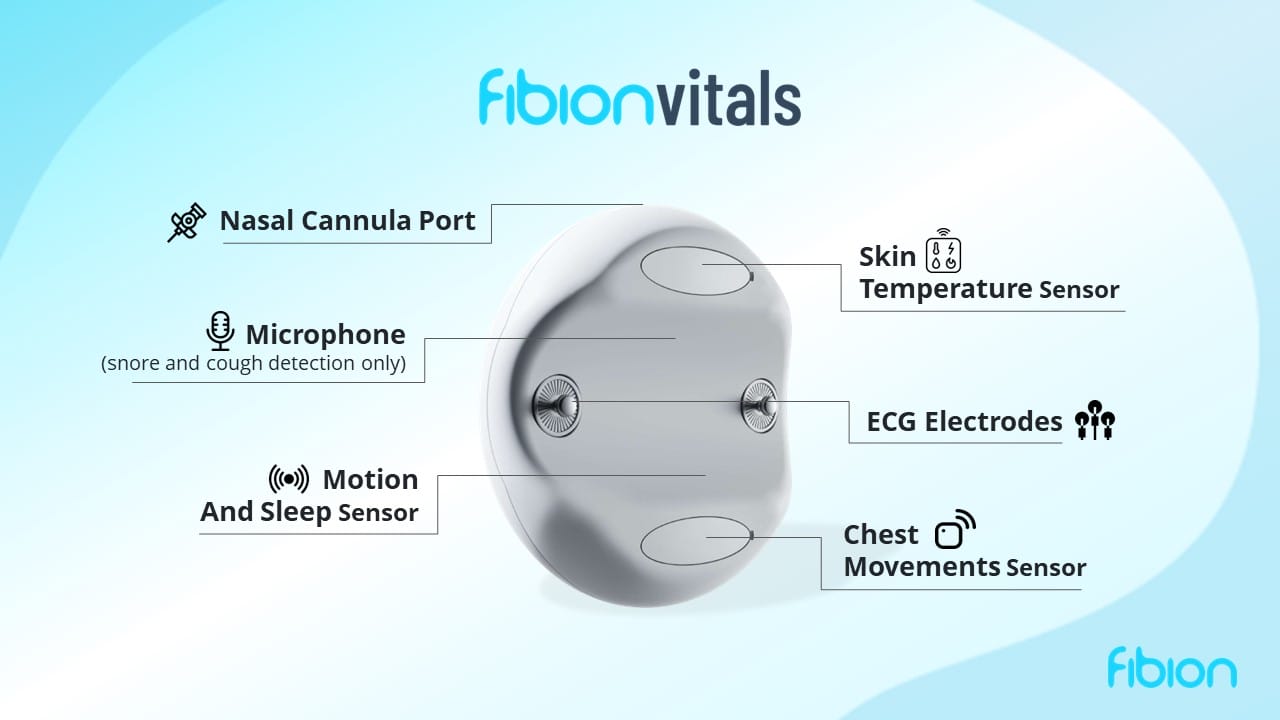
This comprehensive sensor array, combined with the device’s wireless connectivity and cloud-based data analysis, positions Fibion Vitals as a great option for modern sleep research. Its design facilitates not only the collection of rich, multidimensional data but also a seamless participant experience, free from the constraints of traditional sleep study setups.
“Fibion Vitals exemplifies the evolution of sleep research devices, offering a holistic view of sleep health through its advanced, multifunctional design.”
By enabling researchers to collect a wide array of physiological data through a single, easy-to-use device, Fibion Vitals has set a new level for efficiency and efficacy in sleep measurements at home.
Enhancements in Data Collection and Analysis
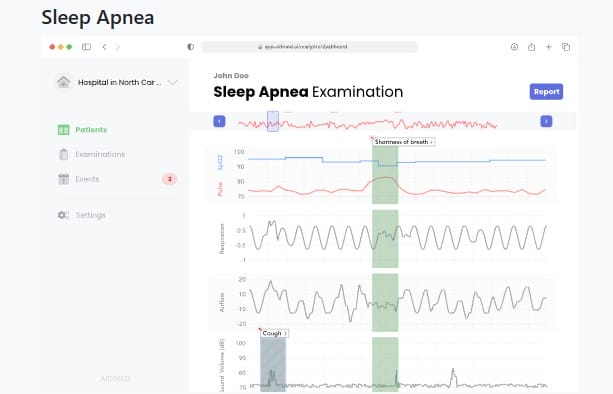
The advent of compact multi-signal sleep research devices like Fibion Vitals has not only streamlined the data collection process but also significantly enhanced the depth and quality of data analysis. With the integration of wireless connectivity and cloud-based data management, researchers can now access, analyze, and share sleep study data with unprecedented ease and efficiency.
Transforming Data Analysis Through Technology
-
- Real-Time Data Transmission: Wireless connectivity allows for the immediate transfer of data from the device to the researcher’s database, facilitating real-time monitoring and analysis.
-
- Cloud-Based Data Management: Ensures secure storage, easy access, and the ability to analyze large datasets using advanced computational tools.
-
- Encrypted Data for Security: Protects sensitive participant information, adhering to the highest standards of research ethics and data privacy.

These technological advancements have not only made sleep research more efficient but have also opened up new possibilities for collaborative studies and longitudinal research, offering insights into sleep patterns over extended periods.
“Wireless and cloud technologies have changed the way we collect, analyze, and interpret sleep data, offering a window into the complexities of human sleep.”
Practical Applications in Research Settings
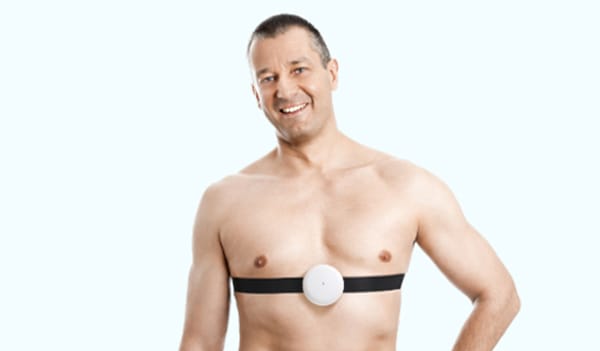
Compact wireless sleep research devices have broadened the horizons for sleep studies, enabling researchers to explore various aspects of sleep in diverse settings. From clinical trials assessing the efficacy of sleep interventions to field studies examining the impact of environmental factors on sleep quality, these devices have proven invaluable.
Expanding the Scope of Sleep Studies
-
- Clinical Trials: Enables the precise measurement of sleep parameters to assess treatment outcomes.
-
- Population-Based Studies: Facilitates the collection of sleep data across diverse environments and populations.
-
- Longitudinal Research: Offers the capability to monitor changes in sleep patterns over time, providing insights into the natural progression of sleep disorders.
By enabling detailed and efficient data collection in virtually any research scenario, these devices have not only enhanced the quality of sleep research but also contributed to a more nuanced understanding of the intricate relationship between sleep and overall health.
Setting Up for Success: Ease of Use and Participant Comfort
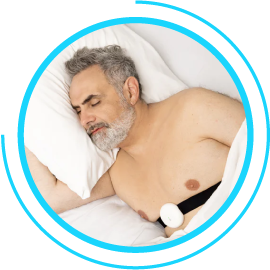
The design and functionality of multifunctional sleep research devices, particularly those exemplified by Fibion Vitals, prioritize not just the comprehensiveness of data collection but also the ease of use and comfort for participants. This focus on user experience is crucial, as it directly impacts the quality of data collected and the willingness of participants to engage in sleep studies.
Key Considerations in Device Design and Setup
-
- Simplified Setup Process: Ensures that both researchers and participants can easily prepare the device for use, minimizing potential for error.
-
- Participant Comfort: Lightweight, compact designs and the elimination of cumbersome wires improve participant compliance and sleep quality during studies.
-
- Flexibility in Data Collection: The ability to collect data in various settings, from clinical environments to the participant’s home, without compromising data integrity.
The emphasis on simplicity and comfort has a profound effect on the feasibility and scalability of sleep research, enabling studies that were previously impractical due to technological limitations.
“Ease of use and participant comfort are crucial for the success of modern sleep research, not just extra design features.”
By removing barriers to participation and ensuring a non-intrusive research experience, devices like Fibion Vitals facilitate a more naturalistic observation of sleep patterns and behaviors, leading to richer, more accurate insights.
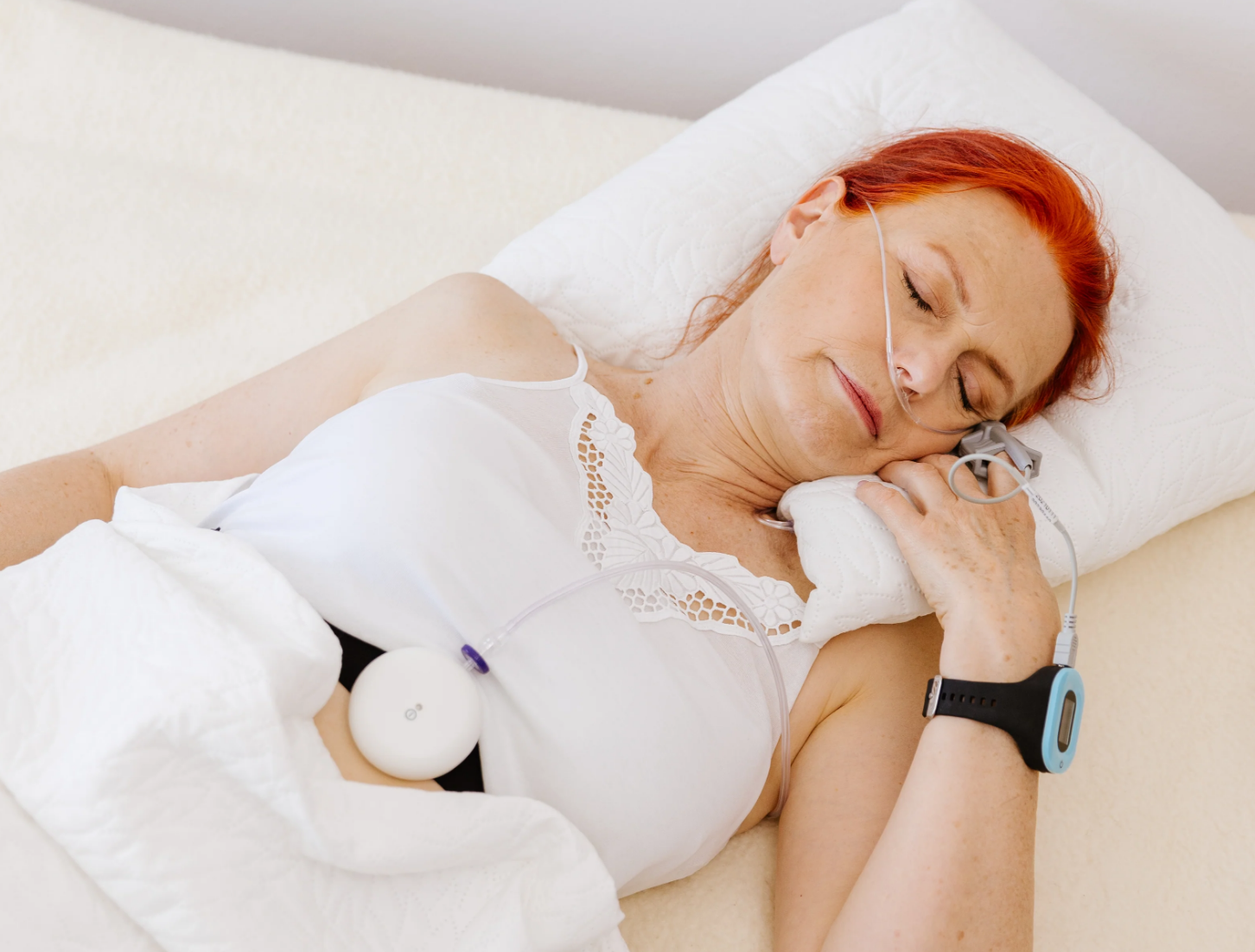
Conclusion
The progression from basic sleep study methodologies to the advanced, multifunctional devices of today, such as Fibion Vitals, marks a significant leap in the field of sleep research. These devices have not only simplified the process of data collection but have also enriched the quality of data available to researchers, offering a more nuanced understanding of sleep patterns and disorders. As we continue to embrace these technological advancements, the future of sleep research looks promising, with the potential for innovative discoveries that could transform our approach to sleep health and treatment.
Call to Action
🚀📊 Learn more about Fibion Vitals
📅 If you are interested to learn more about Fibion Vitals, do not hesitate to book a video call with our expert Dr. Miriam Cabrita.
📚 Explore Our Article Collection in our extensive Sleep collection
Frequently asked questions:
What advancements have multifunctional sleep research devices brought to the field?
+
Multifunctional sleep research devices have revolutionized the field by enabling comprehensive data collection through advanced sensors and wireless technology, facilitating studies with minimal intrusion.
How did sleep research evolve with the introduction of EEG technology?
+
The introduction of EEG technology marked a significant evolution in sleep research, enabling objective measurement of brain waves and sleep stages, moving beyond subjective reports and visual monitoring.
What are the key features of modern multifunctional sleep research devices?
+
Modern devices offer comprehensive data collection, wireless connectivity, user-friendly design, and portability, allowing for sleep studies in natural settings without compromising participant comfort.
How does Fibion Vitals stand out in sleep research technology?
+
Fibion Vitals exemplifies modern sleep research technology with its comprehensive sensor array, wireless connectivity, and cloud-based data analysis, offering a holistic view of sleep health in a non-intrusive manner.
What impact does wireless connectivity and cloud-based data management have on sleep research?
+
These technologies have transformed sleep research by enabling real-time data transmission, secure storage, and advanced data analysis, thus enhancing the efficiency and scope of research studies.
What future advancements can be expected in sleep research technology?
+
Future advancements may include the integration of AI for deeper data analysis, augmented reality for enhanced participant interaction, and broader applications for health monitoring in various settings.

